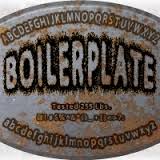Why a Business Plan Template is Wrong; You need a Business Plan Outline.
by Todd Smith | Jun 24, 2014 | Blog | 3 Comments

Having consulted with entrepreneurs for many years, I get a lot of questions about business plans and requests for a business plan template. I've always been rather opposed to a one size fits all cookie cutter approach to writing a business plan, largely because no two businesses, or sets of assumptions, are the same. Just as we are all unique personalities, so too are businesses distinctly different.
 Never try to force it!
Never try to force it!
Business Plan Outline - the 9 Must Have's!
If you are looking for a proper structure, however I would make sure that we have the following, "must-have's" checked off in order to lay down the proper foundational elements.
- Executive Summary - A very brief (2 page) summary.
- Market/Market Condition - Size of your market and past, present, and future stats.
- Product/Service/Company - What you sell and how you sell it.
- Customers & Competition - Who you sell to and who you compete against.
- Operating Plan - Short term & long term milestones and day to day operations.
- Marketing Strategy - Details online and traditional specific methodologies
- Management - Your team, advisers, & board
- Financial Plan - A written synopsis of your detailed financial forecast
- Risks & Mitigating Factors - Identify weaknesses & how you will overcome.
So trying to force a business plan into a template or business plan software often can have very negative consequences. While business plan templates free you from having to think too much, they often contain sections and content completely irrelevant to your business, thus causing you to waste time or over-think an element which is unneeded.
 No two plans should be alike!
No two plans should be alike!
The worst issue I've seen from these free business plan templates or business plan software is repetition. Novice business plan writers following a template, tend to force the writing to fit the template, and invariably, they state the same thing over and over again in the plan. This totally irritates the reader, typically an investor, and investors have notoriously little patience for a poorly written plan. The minute they become annoyed, they either toss your plan in the trash or hit the delete key and move on to the next opportunity.
A business plan outline, however, is always a good idea, and understanding the key sections of a business plan and the logical flow that an investor will want to see is the way to go.
Another critical design component of a good business plan is to index the content and provide a table of contents. In a PDF or Word business plan, having live links in the table of contents allows the reader to click on a certain section and be taken immediately to that section. Why is this so important? Because, like it or not, most investors aren't going to take the time to read your plan cover to cover, at least not on the first pass. They are far more likely to jump around to a few critical sections to try to find certain information that will either qualify you for a deeper dive, or not. The well structured business plan outline makes it very easy for an investor to find what they're looking for.
I've read a number of business plans over the years that were actually very well written and engaging. But, the plans had no table of contents, were poorly organized, and finding specific details was maddeningly difficult and frustrating. Again, investors has precious little time to search, so even good plans like these, likely wound up in "File 13" (aka the trash).
So, following a solid business plan outline makes a lot of sense. Forcing your project to fit a business plan template doesn't. If you're interested in taking a look at a good business plan outline, drop me a line, and I'll be glad to share one with you!

